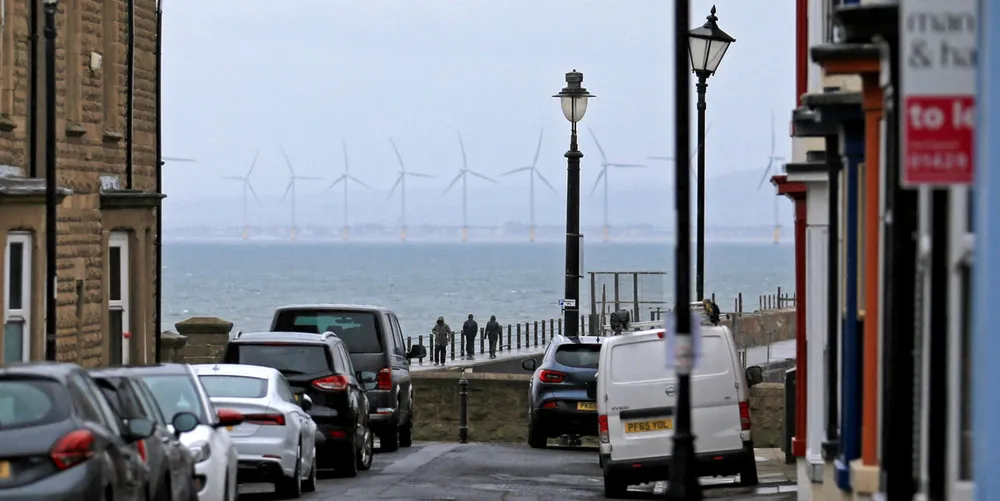Cannibalising renewables? | British Steel eyes use of green hydrogen from existing offshore wind farm
Government-backed green steel feasibility study will tie in with EDF’s Tees Green Hydrogen project, which plans to utilise power from the operational Teesside offshore wind project and a planned a new solar farm

British Steel is investigating how it could manufacture net-zero steel using green hydrogen produced from an existing offshore wind farm, in a move that could open it up to accusations of “cannibalising” existing renewable power supply.
The UK-based Chinese-owned steelmaker said on Tuesday that it had secured government funding to launch a feasibility study into the use of green hydrogen as a fuel source for “re-heating furnaces” in place of natural gas.
According to the company, the study “links into” EDF Renewables’ Tees Green Hydrogen project — announced in March at British Steel’s Teesside Steel Beam Mill in northeast England — which would be powered by the French utility’s existing 62MW Teesside Offshore Wind Farm and a new 49.9MW solar plant that the company plans to build close to the nearby town of Redcar.
However, renewables-powered electric arc furnaces can be used to produce high-temperature heat in other parts of the steelmaking process, such as melting scrap steel. But these would require steelmaking facilities to be retooled, and require large amounts of electricity, whereas hydrogen could be used as a direct replacement for fossil fuels in existing furnaces.
EDF will also collaborate with British Steel on the green steel feasibility study, along with University College London (UCL) and Tees Valley-based research centre, the Materials Processing Institute.
“As part of the feasibility study, EDF… will carry out a technoeconomic assessment of the methodology and practicality of delivery of green hydrogen for fuel switching into the steel manufacturing process, and British Steel will assess the technical implications of the fuel switch on both product and process,” said British Steel’s head of research and development, Gari Harris.
“Together the partners will carry out an assessment of the economic viability and environmental impact of switching from natural gas to hydrogen in defined aspects of steel manufacturing."
The process will last for six months and will be based on British Steel’s operations at the Teesside Beam Mill.
If the study is successful, British Steel plans to develop an industrial-scale demonstration, with a view to rolling out hydrogen-powered green steel technology across all its operations, including its main manufacturing base in Scunthorpe, eastern England.
“It could also be adopted by other UK steelmakers,” British Steel added.
The company has pledged to deliver net-zero steel by 2050, and “significantly reduce” its carbon intensity by 2030 and 2035.
Existing offshore wind
The suggestion that existing offshore wind generation is used to produce hydrogen for British Steel, rather than to provide clean electricity to the grid, is likely to raise eyebrows, especially as the UK is currently in the grip of an acute energy cost crisis and also requires a massive scale-up of renewable energy to meet its net-zero goals.
Teesside, a heavily industrialised area of northeast England, has been earmarked by the UK government as one of the key locations to develop a low-carbon industrial “cluster”. As a result, the area plays host to several hydrogen initiatives, both green and blue (derived from natural gas with carbon capture and storage (CCS).